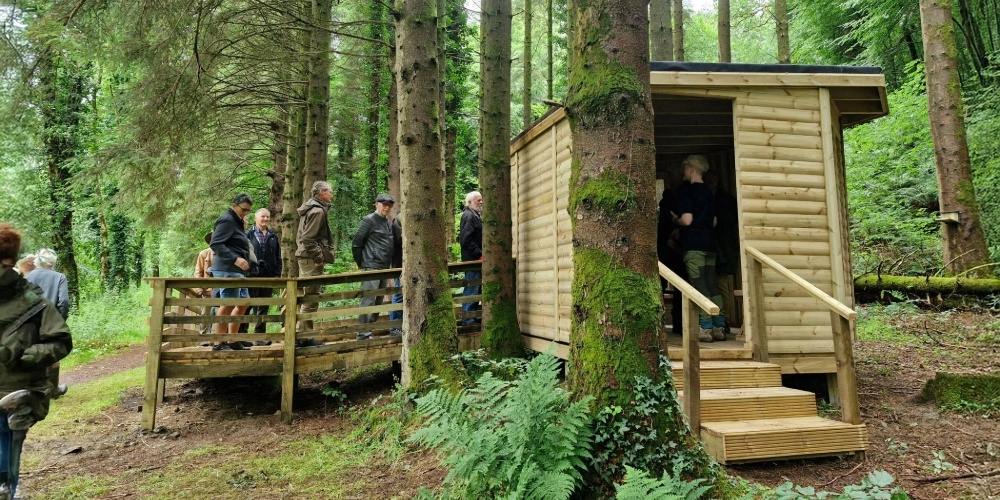Martens on the Move at Kirroughtree
This summer, we launched Vincent Wildlife Trust’s Martens on the Move Pine Marten Haven site at Kirroughtree. The project aims to increase knowledge and understanding of pine martens across the wider community. It is hoped this will build a greater emotional connection with the species for visitors from across Scotland and the rest of the UK.

The project was launched with free guided walks for the public. You can still participate by taking a self-guided walk on the Wild Watch Trail and learn more about the species by reading the pine marten focused information boards along the trail. There are also wildlife viewing facilities where you can try to spot pine martens — amongst other local species— during your walk.
Why are pine martens important?
Pine martens are a protected species in Scotland and an important part of the local ecosystem. They eat what is seasonally and locally abundant and, in this way, help to maintain a healthy and balanced woodland. They are known to predate on squirrels with non-native invasive grey squirrels occurring more frequently in their diet than the native red squirrel.
Grey squirrels carry squirrel pox —and whilst this non-native species has a natural resistance to the disease, it poses a major threat to native red squirrel populations. Grey squirrels also outcompete red squirrels for food. Research has shown that where pine martens are doing well, grey squirrel numbers are suppressed and red squirrels thrive. This helps preserve red squirrel populations – in areas such as Galloway Forest, which is an important stronghold for the species.
What else are we doing to increase pine marten numbers?
We install artificial pine marten den boxes in areas where natural denning opportunities are scarce. Pine martens are slow breeders, and these den boxes support breeding success in the areas where they are found.
The boxes are attached 4-5 metres off the ground onto tree trunks, with roofs to keep the wind and rain out and wood shavings inside. Conifer plantations or productive forests do not have many tree cavities suitable for pine marten dens and so these den boxes provide a safe, comfortable alternative.
In 2022, we trialled the use of thermal imaging technology to monitor pine marten boxes. These allow us to check more than 100 den boxes across Galloway Forest Park and record baby pine marten (known as ‘kits’) numbers.
Can I view other species on the Wild Watch Trail?
Alongside pine martens, the Wild Watch Trail at Kirroughtree is a great place to spot red squirrels throughout the year. You might hear them before you see them as their claws tend to make a scratching sound as they run along the branches. Red squirrels are smaller than grey squirrels and can be identified by the hairy tufts on their ears in winter.
You can also spot roe deer and colourful woodland birds on the trail, with plenty of feeders across the site. The Wild Watch Trail is an accessible trail with a firm and generally flat path, and a few gentle gradients. It takes around 30 minutes to complete the trail.